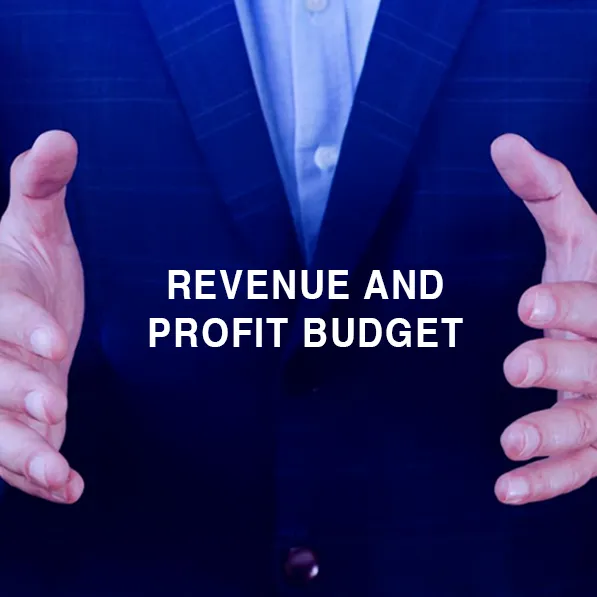
REVENUE & PROFIT BUDGET
If You Don’t Control the Money, the Money Will Control You. The Power of a Revenue & Profit Budget.
There is a turning point in every business where the owner realizes something uncomfortable:
Cash flow is not the same as profitability.
A business can have customers, sales, and even strong revenue…
and still not pay the owner well.
And still feel tight on cash.
And still operate month-to-month.
And still feel exhausting to run.
This is not because the business is broken.
It’s because the business has no financial steering system.
In the early stages of business, money comes in unpredictably and goes out unpredictably. The owner reacts to financial stress instead of directing financial momentum. They don’t know the true profit margin. They don’t know what next month will look like. They make decisions from pressure instead of clarity.
And when you don’t plan your numbers, your numbers plan you.
This is why every stable, mature business builds a Revenue & Profit Budget — not as an accounting document, but as a leadership tool.
Because when the owner can see where money is earned, where it is lost, and what levers drive profitability — everything changes.
The business stops feeling emotional.
Decision-making stops feeling heavy.
Cash stops feeling unpredictable.
The Revenue & Profit Budget is the shift from hoping the business works…
to leading it on purpose.
What a Revenue & Profit Budget Really Does
A good budget does not just tell you what you hope to earn.
It tells you:
What your business must sell to be healthy
What your costs must be to remain profitable
What you can afford as you grow
What financial decisions are safe — and which are dangerous
How much you, the owner, should be paid
When to hire
When to wait
When to invest
When to stabilize
It is not about prediction.
It is about alignment between ambition and reality.
When your goals, pricing, margins, and expenses align — the business becomes sustainable.
The Structure of the Revenue & Profit Budget
There are four moving parts. Each must be understood:
1. Revenue Streams
List every source of income — not just total revenue.
Examples:
Product line A
Service package B
Monthly retainers
One-time fees
Maintenance or subscription
Because not all revenue is equal.
Some sales are profitable.
Some sales drain time, resources, and energy.
The Budget allows you to see which revenue streams deserve growth and which need to be restructured or removed.
2. Cost of Delivery (Direct Costs)
These are the expenses required to deliver the product or service itself.
Examples:
Materials
Subcontractors
Labor directly tied to delivery
Software tools required to fulfill
Licensing fees
Most small business owners underestimate delivery costs.
The result:
They believe they are profitable when they are not.
The Budget forces the truth to surface.
3. Operating Expenses
These are the costs required to run the business — not to serve the customer.
Examples:
Rent / utilities
Salaries not tied to delivery
Admin tools
Insurance
Marketing spend
The owner’s compensation
This is where leakage usually lives.
Not in the big expenses — but the steady, quiet, monthly drip.
The Budget stops that.
4. Owner’s Pay & Profit Reserve
This is where maturity shows.
A business exists to serve two stakeholders:
The customer
The owner
If the owner is:
Not paid consistently
Paid only when “something is left”
Sacrificing personal financial health for the business
Then the business is not healthy.
The Budget forces the business to be accountable to the owner — not the other way around.
Why Most Small Businesses Don’t Have a Budget
Not because they don’t need one.
Not because they don’t understand money.
But because they are afraid to look directly at the truth.
The numbers will tell you:
What works
What doesn’t
What must change
And change is uncomfortable.
But change is also the doorway to freedom.
A Revenue & Profit Budget is not about restriction.
It is about choice.
Choice creates control.
Control creates stability.
Stability creates prosperity.
And prosperity is what gives you your life back.
Your Coaching Assignment
Schedule one quiet hour.
Answer these — without emotion:
What were your total sales last year?
What did it truly cost to deliver those sales?
What were your actual operating expenses?
How much did you pay yourself?
What would a healthy, intentional version of each of these numbers look like?
Then build the budget around the future you are committed to, not the past you survived.
This is where your business stops running on adrenaline —
and starts running on purpose.
